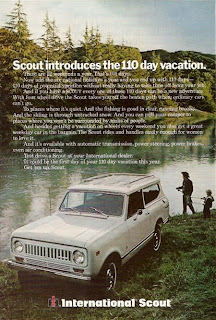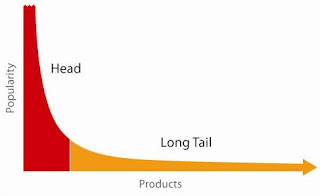The final assignment is due on November 20th. It's 2500 words, not including the bibliography. You need to do the following:
(1) Submit a 'draft' of your assignment through TurnItIn (see the last post) on October 31st.
(2) Run the final version of your assignment through TurnItIn around the 18th of November.
(3) Submit the final version of the Assignment, with the TurnItIn report attached to it, through AssignIT on November 20th.
There's an online guide to this assignment at:
http://www.unisanet.unisa.edu.au/learn/Learningconnection/?PATH=/Resources/la/Media+Literacies+(HUMS+1013)+-+Research+Essay+SP5-2009/&default=Welcome.htm
But keep in mind, that guide hasn't been updated recently. Follow the instructions in the course guide and in the tutes over anything you find at that URL.
Sunday, October 25, 2009
Sunday, October 18, 2009
Computer Room Tutorial
If you don't get to the computer room tutorial, you can do the following at home or in the library.
Computer Room Tutorial
Today’s tute is essentially an exercise in aggravating data entry. You’ll be doing three things:
(1) Logging in to TurnItIn. All you need to do with this today is login. Make sure you remember your password. We’ll go over the reason you’re doing this in next week’s tutorial.
(2) Doing the Student Evaluation of Teaching. This is an anonymous form giving me feedback on my teaching. The scores also affect my ability to get further tutoring work in the future. They are totally anonymous and, whilst I see your answers, I don’t see your name or any other identifying notes in the final report. I do value feedback on how I can teach this course better in the future.
(3) Doing the Course Evaluation Instrument. This is akin to the above, but the feedback is for the course coordinator (Jean) and lecturer (Kit). This is where you give feedback regarding things like the lectures, access to online course materials, the layout of the course information booklet etc.
(1) TurnItIn
(1) Go to your student email. You should have an email from TurnItIn. It will include your email address and a temporary password.
(2) Follow the prompts to login.
(3) Eventually you’ll get to a page that has “Assignment List” and “Your Portfolio” written up the top of it.
(4) There should be two ‘Assignments’ listed below. One will say “Final Assignment Media Literacies” and the other will say “Revision One”.
(5) On October 31st you need to upload a “Draft” of your Assignment. To do this, click on the little picture of the arrow next to ‘Revision One” and below ‘Your Portfolio”. Fill in the sections for your name and write your name plus the word ‘Draft’ under ‘Submission Title’. Then click “upload”.
(6) After uploading you’ll be redirected to a page that says “Submit paper”. Scroll down and click on ‘Submit’.
(7) In theory, at some point in the next 15 minutes to 24 hours you’ll get a report telling you whether you’ve plagiarised or not. It’ll appear as a little coloured line with a percent next to it. You need to log back in to TurnItIn to get this.
(8) For the final assignment, you need to follow all of the above steps, except submitting your final assignment under the “Final Assignment Media Literacies”.
(2) SET and (3) CEI
You should get an email asking you to answer and Student Evaluation of Teaching, or something similar. Follow the links.
Computer Room Tutorial
Today’s tute is essentially an exercise in aggravating data entry. You’ll be doing three things:
(1) Logging in to TurnItIn. All you need to do with this today is login. Make sure you remember your password. We’ll go over the reason you’re doing this in next week’s tutorial.
(2) Doing the Student Evaluation of Teaching. This is an anonymous form giving me feedback on my teaching. The scores also affect my ability to get further tutoring work in the future. They are totally anonymous and, whilst I see your answers, I don’t see your name or any other identifying notes in the final report. I do value feedback on how I can teach this course better in the future.
(3) Doing the Course Evaluation Instrument. This is akin to the above, but the feedback is for the course coordinator (Jean) and lecturer (Kit). This is where you give feedback regarding things like the lectures, access to online course materials, the layout of the course information booklet etc.
(1) TurnItIn
(1) Go to your student email. You should have an email from TurnItIn. It will include your email address and a temporary password.
(2) Follow the prompts to login.
(3) Eventually you’ll get to a page that has “Assignment List” and “Your Portfolio” written up the top of it.
(4) There should be two ‘Assignments’ listed below. One will say “Final Assignment Media Literacies” and the other will say “Revision One”.
(5) On October 31st you need to upload a “Draft” of your Assignment. To do this, click on the little picture of the arrow next to ‘Revision One” and below ‘Your Portfolio”. Fill in the sections for your name and write your name plus the word ‘Draft’ under ‘Submission Title’. Then click “upload”.
(6) After uploading you’ll be redirected to a page that says “Submit paper”. Scroll down and click on ‘Submit’.
(7) In theory, at some point in the next 15 minutes to 24 hours you’ll get a report telling you whether you’ve plagiarised or not. It’ll appear as a little coloured line with a percent next to it. You need to log back in to TurnItIn to get this.
(8) For the final assignment, you need to follow all of the above steps, except submitting your final assignment under the “Final Assignment Media Literacies”.
(2) SET and (3) CEI
You should get an email asking you to answer and Student Evaluation of Teaching, or something similar. Follow the links.
Sunday, October 11, 2009
Overview of the Course So Far
Let’s consider some examples of media and think about what the course has gone over so far. A couple of weeks ago we looked at a bunch of ads and asked a few questions:
What signs do you see?
What discourses (or themes) are evident?
What’s the story being told?
How does that relate to a particular ideology or hegemony?
So let’s really quickly look at an ad:
Now let’s look at another ad.
What happened here?
Chevy Tahoe hired some advertising company that had heard about ‘mash ups’ and put the material required to make an ad for them online, tried to go all Web 2.0 and get some ‘user generated content’. They put the footage online, the music and let people rearrange them and ad their own captions and sound tracks. They got a whole pile of these, most of which are now on YouTube.
This is emblematic of a shift in how people think about advertising, but also in how we think about media.
In The Sociology of Culture, Raymond Williams writes:
"…whatever purposes cultural practice may serve, its means of production are unarguably material. Indeed, instead of starting from the misleading contrast between ‘material’ and ‘cultural’, we have to define two areas for analysis: first, the relations between those material means and the social forms within which they are used… and, second, the relations between these material means and social forms and the specific (artistic) forms which are a manifest cultural production."
What does that mean? It means media is about signs and communication, but its also about how those signs reach the reader. What Chevy fails to recognise is that its not the 1950s, and media isn’t one-way anymore.
Let’s think about another example. On top of thinking about the signs and discourses, think about how those signs and discourses move from the producer (the publisher, writer, editor, etc) to the consumer (the reader).

The Gutenberg Bible
What made this revolutionary?
Let’s consider two other examples, both taken from Chris Anderson’s book ‘The Long Tail’.
http://www.youtube.com/watch?v=BtHadAigayc
Anderson cites these guys as having produced the fastest selling album of all time, with 2.4million copies in the first week, released in Jan 2000. They were put together by a music mogal called Lou Pearlman at Sony, but for their second album, No Strings Attached, they shifted to a subsidiary called Jive to get more street cred.
Anderson says these guys benefited from a particular media structure that controlled how media products reached an audience. He explains this at length in the Long Tail, but consider it in brief. Here's a picture of the Long Tail"

When this piece of music came out, it relied on retail outlets, radio and MTV to attract an audience. With limited space, and the necessity of a huge market to cover the cost of accessing that space, only the 'hits' were commercially viable. Guys like Pearlman knew how to work that structure and make hits.
According to Anderson, their success will never be matched because it’s no longer possible for record companies to control their audience in the same way. Anderson talks about the shift towards the ‘long tail’, whereby people buy more niche markets. He uses the example of The Lonely Island.
He says these guys are an example of people becoming successful not because they had a record company that knew how to run a good publicity campaign, but because they slowly built a grassroots reputation through things like YouTube. There’s some other famous examples of recent years.
MC Spandex, who got almost a million hits and world wide fame for a low budget parody music video clip:
Another ‘famous’ example is Tim and Eric. Only watch this if you’re feeling brave. These guys have a well established cult following, but as you can tell from the below clip they’d never fit into the old media structure:
What changes have happened to allow us to go from the boy bands of the late 90s and early 2000s, selling millions of copies, to things like The Lonely Island becoming popular?
Further Reading
The point is that mediums are as important as the meanings they produce. Some useful theory for looking at mediums:
Raymond Williams, The Sociology of Culture.
Hillel Schwartz, The Culture of the Copy.
Marshall McLuhan, The Essential McLuhan.
Andy Greenwald, Nothing Feels Good: Punk Rock, Teenagers and Emo.
Tara Brabazon, From Revolution to Revelation.
Steven Roger Fischer, A History of Reading.
Asa Briggs and Peter Burke, A Social History of the Media.
What signs do you see?
What discourses (or themes) are evident?
What’s the story being told?
How does that relate to a particular ideology or hegemony?
So let’s really quickly look at an ad:

Now let’s look at another ad.
What happened here?
Chevy Tahoe hired some advertising company that had heard about ‘mash ups’ and put the material required to make an ad for them online, tried to go all Web 2.0 and get some ‘user generated content’. They put the footage online, the music and let people rearrange them and ad their own captions and sound tracks. They got a whole pile of these, most of which are now on YouTube.
This is emblematic of a shift in how people think about advertising, but also in how we think about media.
In The Sociology of Culture, Raymond Williams writes:
"…whatever purposes cultural practice may serve, its means of production are unarguably material. Indeed, instead of starting from the misleading contrast between ‘material’ and ‘cultural’, we have to define two areas for analysis: first, the relations between those material means and the social forms within which they are used… and, second, the relations between these material means and social forms and the specific (artistic) forms which are a manifest cultural production."
What does that mean? It means media is about signs and communication, but its also about how those signs reach the reader. What Chevy fails to recognise is that its not the 1950s, and media isn’t one-way anymore.
Let’s think about another example. On top of thinking about the signs and discourses, think about how those signs and discourses move from the producer (the publisher, writer, editor, etc) to the consumer (the reader).

The Gutenberg Bible
What made this revolutionary?
Let’s consider two other examples, both taken from Chris Anderson’s book ‘The Long Tail’.
http://www.youtube.com/watch?v=BtHadAigayc
Anderson cites these guys as having produced the fastest selling album of all time, with 2.4million copies in the first week, released in Jan 2000. They were put together by a music mogal called Lou Pearlman at Sony, but for their second album, No Strings Attached, they shifted to a subsidiary called Jive to get more street cred.
Anderson says these guys benefited from a particular media structure that controlled how media products reached an audience. He explains this at length in the Long Tail, but consider it in brief. Here's a picture of the Long Tail"

When this piece of music came out, it relied on retail outlets, radio and MTV to attract an audience. With limited space, and the necessity of a huge market to cover the cost of accessing that space, only the 'hits' were commercially viable. Guys like Pearlman knew how to work that structure and make hits.
According to Anderson, their success will never be matched because it’s no longer possible for record companies to control their audience in the same way. Anderson talks about the shift towards the ‘long tail’, whereby people buy more niche markets. He uses the example of The Lonely Island.
He says these guys are an example of people becoming successful not because they had a record company that knew how to run a good publicity campaign, but because they slowly built a grassroots reputation through things like YouTube. There’s some other famous examples of recent years.
MC Spandex, who got almost a million hits and world wide fame for a low budget parody music video clip:
Another ‘famous’ example is Tim and Eric. Only watch this if you’re feeling brave. These guys have a well established cult following, but as you can tell from the below clip they’d never fit into the old media structure:
What changes have happened to allow us to go from the boy bands of the late 90s and early 2000s, selling millions of copies, to things like The Lonely Island becoming popular?
Further Reading
The point is that mediums are as important as the meanings they produce. Some useful theory for looking at mediums:
Raymond Williams, The Sociology of Culture.
Hillel Schwartz, The Culture of the Copy.
Marshall McLuhan, The Essential McLuhan.
Andy Greenwald, Nothing Feels Good: Punk Rock, Teenagers and Emo.
Tara Brabazon, From Revolution to Revelation.
Steven Roger Fischer, A History of Reading.
Asa Briggs and Peter Burke, A Social History of the Media.
Subscribe to:
Comments (Atom)